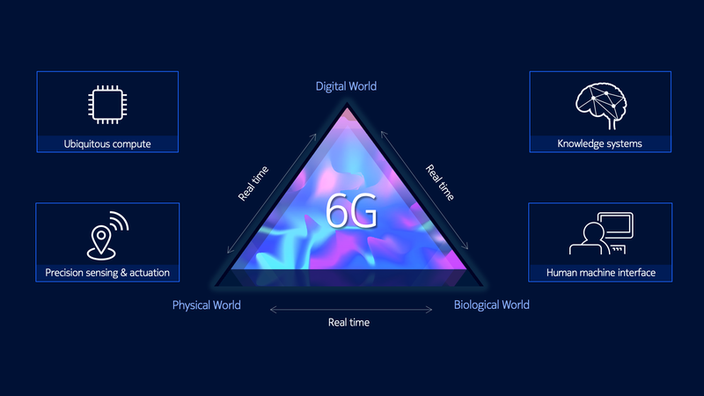4G, 5G, and now 6G.
The players in the sector already have in their laboratories projects for the generation of mobile telephony which should arrive in 2030. But why start to develop now, when 4G is far from being everywhere and 5G is only just around the corner. at its beginnings?
Several reasons for this.
First, because it takes time to develop a new generation of mobile telephony.
Then, mobile telephony standards are the subject of long international negotiations within the framework of the 3GPP (3rd Generation Partnership Project).
However, to weigh in these negotiations and succeed in imposing its own technologies on the entire ecosystem, you need solid research and development, file patents, impose your views ...
Three blocs compete to try to impose their champions: Europe, China and the United States.
The consequences go beyond the scope of telecoms.
All businesses are potentially affected.
Read also: And you, are you more 5G or 6G?
In Europe, the Hexa-X project dedicated to 6G received funding from the European Commission in early December.
Nokia was placed at the head of the project with Ericsson by its side.
About twenty companies are part of Hexa-X, including Orange and Atos for France.
“
Nokia has been at the forefront of marketing each generation of wireless technology, from the first GSM call to 5G networks via 4G networks
,” recalls Stéphane Le Calme, on Developp.com.
Nokia Bell Labs, part of which is in France, continue to play a key role in the group's research.
Artificial intelligence should therefore play a leading role in the development of this new generation.
“
The way network architectures are designed could change radically
,” two researchers from Nokia Bell Labs, Jakob Hoydis and Alvaro Valcarce, explain in a note.
A Chinese satellite.
However, Europe is not particularly ahead in the race for 6G.
Chinese and Americans set off almost a year ago.
The Middle Empire set up a first working group on 6G in November 2019.
Read also: China launches a working group for 6G
The Chinese want to confirm their positions in telecoms.
In particular, in November 2020, they launched a first 6G satellite.
The Americans may not have telecom equipment manufacturers, they are very present in the industry, especially with chip manufacturers.
Qualcomm is a major contributor to global industry standards.
American software publishers are also at the forefront in the field, advocating the development of “
virtual
”
networks
.
Along with the development of 6G, the previous generations, 4G and 5G, continue to evolve.
Today's imperatives are no longer those of yesterday.
Manufacturers are committed to limiting their environmental impact and their energy bill.
They are looking for technologies that are both more efficient and more economical.
5G was the first generation of mobile telephony to integrate this imperative.
6G should further accentuate it.








